A Year in TV Guide explores the 1964-1965 television season through the pages of TV Guide magazine. Each week, I’ll examine the issue of TV Guide published exactly 50 years earlier. The intent is not simply to examine what was on television each week but rather what was being written about television.
Week #29
April 3rd, 1965
Vol. 13, No. 14, Issue #627
Eastern New England Edition
On the Cover: Kathy Kersh and Vince Edwards (photograph by Ivan Nagy).
The Magazine
Richard Gehman’s cover article about actor Vince Edwards, star of ABC’s medical drama Ben Casey, is a little more engaging than most of its profiles because it doesn’t read like a biography. Edwards is initially described as aloof and off-putting to such a degree that when Gehman was earlier tasked with writing an article about Ben Casey, he tried four times to get an interview with Edwards before giving up and writing it without talking to him. But Edwards has evolved over the past few years. The two sat together at an event and Edwards agreed to an interview.
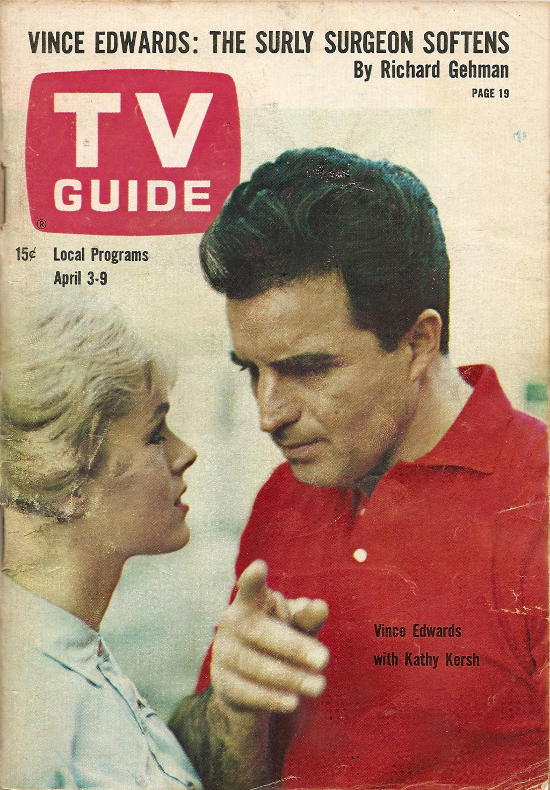
Front Cover – Copyright 1965 Triangle Publications, Inc.
Over dinner and later at his house, Edwards opened up about undergoing analysis and how it has helped him learn more about himself and his situation. Here’s what he had to say about how his guilt and hang-ups were holding him back:
Well, sometimes people feel they’re victims of luck. In closer analysis they should really evaluate and say, “It’s my own ability that brought me this far. It hasn’t been luck. I’m not a bad person at all.” Yet a lot of people hate themselves, feel they don’t deserve what they have, and consequently are apologizing for everything that happens to them.
And here are his thoughts on the relationship between money and art:
Yes, to make money, art sometimes goes out the window. “We’ve got to cut a corner here,” we’ll say, “and we’ll do it this way instead of the arty way.” I found this out when I began to direct some of the shows we’ve done. Say we have an actor who takes eight days to do a show instead of six. I don’t care how great he is, I don’t want him on the show because it means he’ll cost us $75,000 or even $100,000 over our budget.
Edwards explained he was tired of his role on Ben Casey but not bored with it. Still, after the end of his five-year contract he plans on leaving. Gehman closed the article by reiterating how much Edwards has changed:
Blame it on analysis, perhaps; but analysis is only a tool for a man who wants to improve himself. The business of television had a good deal to do with tit, too; he literally has grown up in the medium, which out to disturb its critics. Whatever the reasons, Vince Edwards is a changed man. For the better.
“She Lights the Stage with a Bright Flame” by Robert Higgins is a three-page profile on actress Julie Harris. It is also more interesting than most TV Guide profiles because of how Harris is described. Higgins pulls no punches:
At 39, Julie Harris is no campfire girl. But from 10 paces she could pass for a wistful 16-year-old. Her orange hair is pinned recklessly atop her head and waterfalls down her back. She has frail shoulders, very little bust, a bit of a tummy, tiny hands and large feet. Oddly, looking at her, you think of a fallen sparrow–a hapless creature you want to cup and warm in the palm of your hand.
It is likely Harris would agree with this statement. She is said to be “staggeringly helpless and self-negating” who not only talks about herself in a heavily self-deprecating fashion but also leads an incredibly boring life. She hides in acting and has been doing so since she was young. Watching movies was a passion and an obsession during her childhood. She watched Gone with the Wind 13 times and once saw 52 movies in one month. As an adult, her second marriage has been much happier than her first and the birth of her son has brought her some happiness. Still, she’s not content. “I haven’t yet found myself,” Harris explains. “My family is as important to me as my life, but that doesn’t tell me who I am. Some people never do find themselves. But I, for one, have to go on trying.”
The final article, “Cultivating ‘God’s Little Acre'” by Neil Hickey, examines the state of religious broadcasting on network television. This is an area of television history I’ve never really looked into. I recognized the names of the two CBS religious programs, Lamp unto My Feet and Look Up and Live, but not ABC’s Directions ’65 or NBC’s three shows: Frontiers of Faith, The Eternal Light, and The Catholic Hour. I had no idea that the FCC effectively forced stations to air religious programming, at least according to the interpretation presented in this article. Hickey explains that “since 1927, every applicant for a license to operate a commercial radio or TV station has had to inform the FCC about how much religious programming he intends to do. Then, when his license comes up for renewal every three years, he must establish that his actions matched his promises.”
[Hickey describes this as a “religious requirement” but presumably couldn’t a station simply tell the FCC it didn’t plan on airing any religious content?]
Controversy has erupted recently regarding the FCC’s position on religious programming, with the FCC being accused of violating the First Amendment and one if its Commissioners arguing that the FCC has gone too far. But the networks, or at least those in charge of religious programming, still feel enthusiastic about their artistic freedom. Pamela Illott from CBS, for example, declares “We are pathfinders in the discussion of such subjects as racism and birth control on TV. We can afford to risk failure because vast sums are not tied up in each of our productions.” And ABC’s Wiley Hance explained “Our goals are to stir the mind of the viewer; to take him perhaps a step further than his own thinking to be provocative, to give people a greater appreciation of the marvelous things we have around us–art music, philosophy, poetry–all of which are God-given.”
TV Guide published its third “If I Had a Network” essay in this issue, this time asking humorist Leo Rosten what he would do with a television network. (Previous entries came from Max Schulman in the December 5th, 1964 issue and Marya Mannes in the February 6th, 1965 issue). Rosten laid out 12 steps he would take:
- Launch a series of documentaries focusing “on those aspects of life which become more and more remote to the average man” (like the operation of the Detective Bureau in New York City, for example) as well as :the brilliant technology and services that make modern living possible” (such as the telephone exchange).
- Rethink educational films, finding or adapting those that are exciting rather than dull and pedantic.
- Adapt plays written between 1880 and 1920 to make them suitable for modern audiences and the television medium.
- Superimpose a clock during commercials or news bulletins or once every hour on the hour so viewers always know what time it is.
- Refuse to accept commercials “that violate a modicum of taste.”
- Go on the air once a week for a half hour to respond to viewers letters, explaining why decisions about programs have been made in the hopes of educating viewers about television in the hopes of building a better audience eager for better programs.
- Urge viewers to write to stations to share their opinions and turn off programs they don’t like. This would be used to move advertisers and agencies “away from the delusions that spring from brute statistics about audience size.”
- Stress to anyone and everyone “that there is a correlation between education, income–and spending. I would try to reach not that amorphous thing called “the audience,” but special, smaller audiences.” After all, “quality does have a way of paying off in the long run.”
- Establish a blue-ribbon panel to award annual prizes for the best and worst commercials.
- Create a show called The Unpopular Hour to focus exclusively on controversial people and opinions because “nothing so enlivens any medium as controversy, argument, conflict.”
- Experiment with new ways to produce discussion programs. “There must be better ways of structing a discussion–more energetic moderators, a firmer, brisker organization of points, clearly set points of resolution.”
- Insist that documentaries end with lists of source material so viewers can find more information. It didn’t hurt newspapers to “publicize its competitors” (radio and television listings) so it won’t hurt TV, either.
The “As We See It” editorial this week is a full page rather than a half-page column. It uses the recent ousting of CBS President James T. Aubrey to make the case that successful broadcasting executives are all con men and sometimes the cons don’t last. Three examples are discussed, starting with Aubrey, whose con was acting “the ruthless heavy” and alienating nearly everyone around him: CBS stars, advertisers, network colleagues, everyone but his friend Keefe Brasselle whose three shows tanked. Then there was the former head of the Curtis Publishing Company, Matthew J. Culligan, whose con was constantly keeping busy until all the money he spent staying busy caught up with him. Finally, there was Sylvester L. “Pat” Weaver, whose con was dreaming big and expensive. As president of NBC some of his dreams — The Today Show and The Tonight Show — paid off. But when he joined Subscription TV and dreamed “of a brave new television world where viewers would pay and pay and pay” everything fell apart. Because the viewers wouldn’t pay and Subscription TV’s stockholders got rid of Weaver.
Cleveland Amory’s review of The King Family is mostly positive. He opens the review by stating “if it is a bit thick at times–and even a bit square–there is nonetheless great talent here, and charm as well, which, these days, are all too often mutually exclusive ingredients.” He does point out that the sheer number of Kings can be confusing, both to viewers and apparently to members of the family as well. He praises the children and the women but is not as impressed with the men. “In fact,” he writes, “outside of Cam and Alvino Rey, who can play any instrument, even the ones he makes himself, for us any time, our favorite King males are the two who, we are told, are off performing a mission for their church. Wise boys.”
News from the Hollywood and New York TV Teletype columns:
- Another new half-hour Western called The Loner will likely find a place on a 1965-1966 schedule. Co-produced by Rod Serling and Bill Dozier, the series will probably star Lloyd Bridges as a former Union soldier roaming the post-Civil War West.
- It appears all three networks will launch their entire lineups during the week of September 13th-19th.
- Paramount will try to craft a series based on its film Stalag 17.
- Ed Sullivan has returned from Rome where he filmed the Noah’s Ark scene for the upcoming movie The Bible, which he will screen during his Easter episode.
- Jill St. John has been signed by Bob Hope to appear in four episodes of his series next season.
- William B. Williams will probably become the permanent sidekick to the rotating hosts of ABC’s Nightlife.
- ABC Scope is planning a pair of 20th anniversary specials, one focusing on V-E Day and the other on the United Nations.
Rounding out the national section is a picture feature showcasing Prasanna Rao and his incredible finger shadows, recipes for beer cheese and rye bread (said to be “a real treat for your husband”), and the regular TV crossword puzzle.
There were just two news reports in the “For the Record” column in the listings section this week, one long and one short:
- The Early Bird satellite will hopefully start transmitting TV and telephone signals between the United States and Europe during the next few days. Orbiting some 22,3000 above the Atlantic, Early Bird will be the first fixed-position satellite intended for full-time commercial use. Ownership of the satellite is split between the Commnications Satellite Corporation (Comsat) which owns 56% and 45 foreign countries that share the rest. Three weeks after Early Bird is launched from Cape Kennedy, TV service will begin. A special inaugural program will be aired by the networks in the United States as well as the Canadian Broadcasting Corporation and the European Broadcasting Union. For six to eight weeks after that, Early Bird will focus mostly on telephonic testing before switching to TV seven days a week (after 3PM Eastern). Early programs to utilize the satellite will include an entire episode of Today, transatlantic installments of The Huntley-Brinkley Report, Walter Cronkite newscasts, and a 20th anniversary program about V-E Day on CBS. [Early Bird, officially named Intelsat 1, launched on Tuesday, April 6th. The inaugural broadcast took place on May 2nd.]
- The FCC finally has a replacement for Frederick Ford, who resigned three months ago. Last week President Johnson appointed James. J. Wadsworth to the Commission.
The letters page this week was all over the place. There were two letters about ABC’s Nightlife, both critical (“The United States had it first, Russia second, and now ABC has the biggest bomb of all.”). There were also two letters about Mr. Novak, one praising it for a March 16th episode that “rendered a public service in facing the nation-wide problem of extremist pressures on the schools,” and another criticizing the series for becoming too political. One reader wrote in to lament the departure of Robert Lansing from 12 O’clock High. There were three letters complaining about commercials:
The current madness in commercials is the “New Improved” gag. It makes me wonder just how horrible was the stuff they used to sell us.
(Name withheld)
Yacolt, Wash.Most TV commercials could be improved by adding canned laughter.
Glen L. Dyer
Palos Heights, Ill.I really looked forward to The Sunday Night Movie and I was not disappointed. “Judgement at Nuremberg” was wonderful. However, I counted 45 separate ads during the course of the movie. Isn’t that carrying it a little too far?
Joan Franz
North Miami, Fla.
Finally, there was a letter from a boxing fan objecting to the March 20th “As We See It” editorial that declared boxing dead and TV the killer. The grosses at Madison Square Garden, the letter declared, “show that boxing is well on the road to recovery.”
The TV Listings
It was a relatively packed week for network television. From 3:30-5PM ABC aired the Connecticut Open, part of the Pro Bowlers Tour, live from Hartford, CT. Interestingly, the ABC affiliate in Connecticut didn’t air the tournament because it was showing NCAA skiing instead. CBS aired the first half of the two-day final match of the CBS Golf Classic on Saturday, April 3rd from 4-5PM. At 9PM CBS debuted Secret Agent, an hour-long spy series starring Patrick McGoohan. WTEV (Channel 6) aired the premiere at 6PM rather than 9PM in order to show a movie during prime time.
On Sunday, April 4th CBS aired the second day of the CBS Golf Classic final match from 4-5PM, opposite the fourth and final installment of American Sportsman on ABC. From 7:30-8:30PM, ABC aired “The General,” a David L. Wolper documentary about General Douglas MacArthur narrated by Van Heflin.
ABC aired live coverage of the 37th annual Oscar Awards with host Bob Hope on Monday, April 5th starting at 10PM and scheduled to run through 12:30AM. Both Ben Casey and ABC’s Nightlife were pre-empted. On Tuesday, April 6th from 10-11PM NBC aired “Terror in the Streets,” an NBC White Paper questioning whether urban crime rates have been increasing. Chet Huntley narrated.
The Celebrity Game returned to CBS on Thursday, April 8th at 9:30PM. The half-hour game show was hosted by Carl Reiner. Panelists included Nick Adams, John Forsythe, Zsa Zsa Gabor, Hedda Hopper, Roddy McDowall, and Jack Palance.
Finally, on Friday, April 9th ABC aired another episode of Saga of Western Man, this one focusing on Custer’s famous last stand at Little Big Horn. John Secondari narrated.
Here are the TV Guide close-ups for the week:
- CBS Golf Classic (CBS, Sunday at 4:00PM)
- American Sportsman (ABC, Sunday at 4:00PM)
- Twentieth Century – “Man with a Violin: Isaac Stern” (CBS, Sunday at 6:00PM)
- Special: The General (ABC, Sunday at 7:30PM)
- Special: Let My People Go (WPRO-TV, Monday at 8:30PM)
- Special: Movie Oscar Awards (ABC, Monday at 10:00PM)
- Special: NBC White Paper – “Terror in the Streets” (NBC, Tuesday at 10:00PM)
- Hallmark Hall of Fame – “The Holy Terror” (NBC, Wednesday at 7:30PM)
- Perry Como’s Kraft Music Hall (NBC, Thursday at 10:00PM)
- Saga of Western Man – “Custer to the Little Big Horn” (ABC, Friday at 7:30PM)
Locally, the week was filled with sporting events. On Saturday, April 3rd, WHDH-TV (Channel 5) aired coverage of the NCAA Swimming and Diving Championships from 2-3PM. From 3-4PM, WHDH-TV, WNHC-TV (Channel 8), and WPRO-TV (Channel 12) aired the NCAA Skiing Championships. On Sunday, April 4th from 10-11:30AM, WHDH-TV, WNHC-TV, WMUR-TV (Channel 9), and WPRO-TV all aired coverage of the opening session of the 135th annual conference of the Church of Jesus Christ of Latter-Day Saints, live from Salt Lake City. At 1:30PM, WHDH-TV aired “The St. Louis Cardinals–The Look of a Champion,” a half-hour special that wonder whether the Cardinals could win the National League pennant for a second year in a row. WTIC-TV (Channel 3) aired the same special from 2-3PM.
WNHC-TV aired a live NBA Play-off game between the Boston Celtics and the Philadelphia 76ers (winners of the Eastern Division Semifinals) at 2PM. It was the first game in a best of seven series that would crown the Eastern Division champion. This was followed at by coverage of the Parachute Club of America, then the Greater Greensboro Open (golf) at 4:30PM, and NCAA Swimming and Diving at 6PM. WMUR-TV also covered the Greensboro Open, joining the game in progress at 5PM. WTIC-TV aired another Hartford Symphony Orchestra concert from 7-8PM, again conducted by Arthur Winograd.
Three stations aired “Let My People Go,” an hour-long documentary examining the Jewish quest fora homeland narrated by Richard Basheart. WPRO-TV aired it from 8:30-9:30PM on Monday, April 5th, WHDH-TV aired it from 7:30-8:30pm on Tuesday, April 6th, and WNHC-TV aired it from 8:39-9:30PM on Thursday, April 8th.
WHDH-TV, WTEV, and WJZB (Channel 14) aired another NBA Playoff game on Tuesday, April 6th at 8:30PM. WGBH-TV (Channel 2) aired the ECAC hockey championship between Brown University and Boston College at 7:30PM on Thursday, April 8th. TV Guide published an announcement explaining that should the Philadelphia 76ers win the NBC Eastern Division Semifinals, WBZ-TV (Channel 4), WHDH-TV, and WIHS-TV (Channel 38) would pre-empt network programming at 8:30PM on Friday, April 9th to air the fourth game of the Eastern Division Championship. The 76ers did win so the game was telecast.
Here are some more local advertisements:
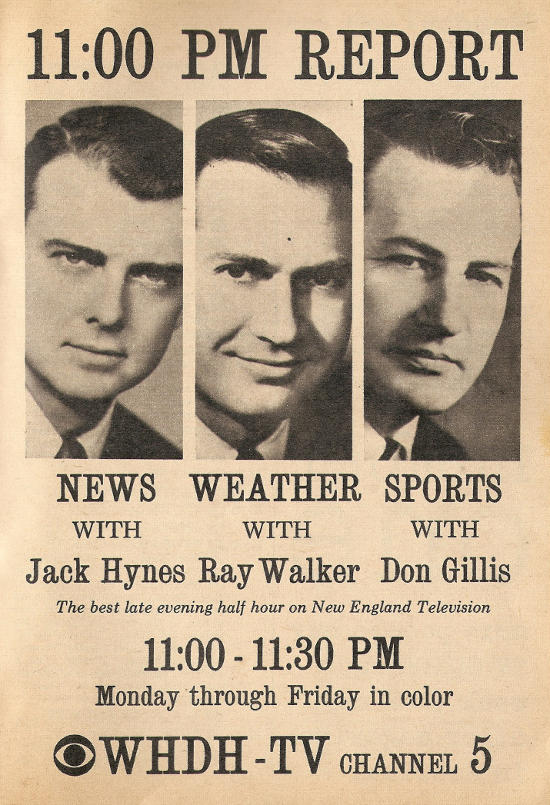
Advertisement for WHDH-TV’s 11:00 PM Report – Copyright 1965 Triangle Publications, Inc.
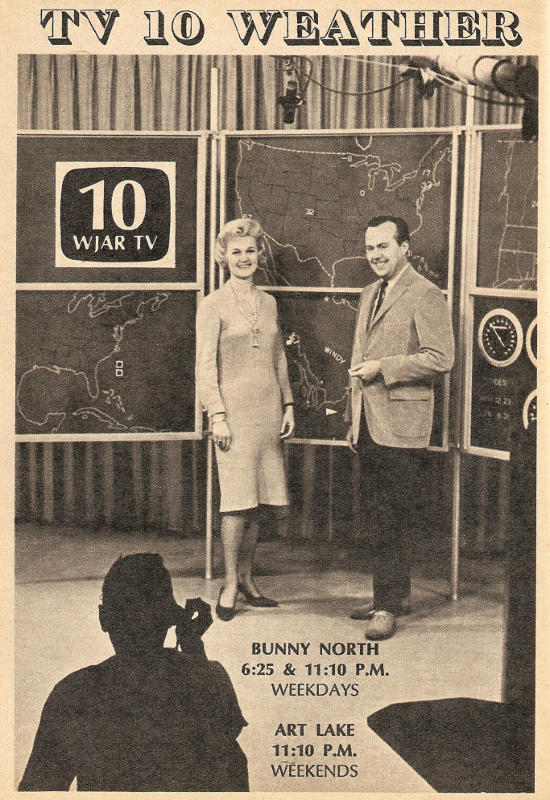
Advertisement for WJAR-TV’s Weather Reports – Copyright 1965 Triangle Publications, Inc.
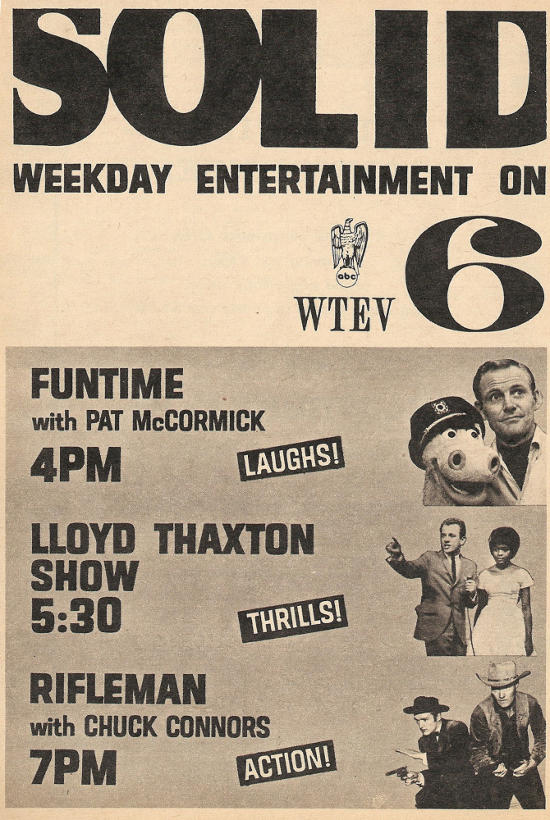
Advertisement for WTEV’s Weekday Evening Lineup – Copyright 1965 Triangle Publications, Inc.
Here are the episode descriptions for Dateline Boston, a local series broadcast live and in color Monday through Friday from 6-6:25PM on WHDH-TV (Channel 5):
Monday, April 5th, 1965
Captain Bob illustrates the elements necessary for a sketch of a familiar New England scene.Tuesday, April 6th, 1965
Jack Woolner of the Massachusetts Division of Fisheries and Game presents a film on the seasonal opportunities for New England sportsmen.Wednesday, April 7th, 1965
Roland Nadeau, Northeastern University, explores the music of the guitar.Thursday, April 8th, 1965
Folk music is presented to the children of a local school.Friday, April 9th, 1965
The Salvation Army Youth Band marks the anniversary of its founder, General William Booth.
That’s it for this week. Hit the comments with your thoughts.

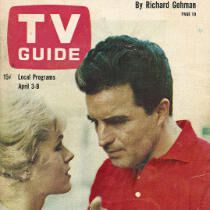
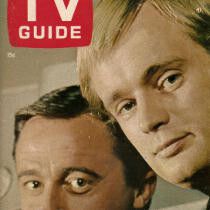
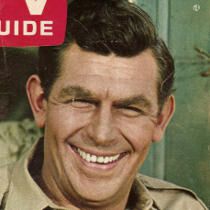
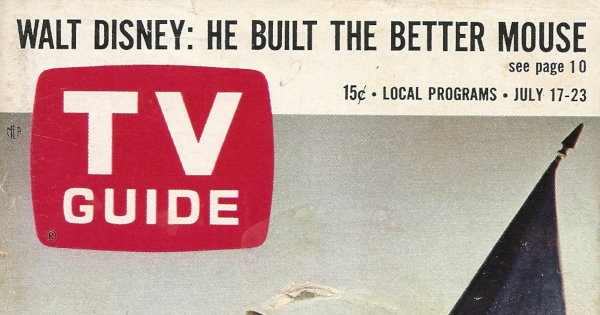



Thanks for doing this each week. Why would WTEV be airing a CBS program (“Secret Agent”) when it was an ABC affiliate? Did WPRO-TV, the area’s CBS affiliate, not air it? I know that the 2 stations did swap affilations in the 70s, but they have switched back now. I was just wondering.
I am still getting familiar with the stations listed in the Eastern New England Edition and didn’t catch that WTEV was an ABC affiliate. It appears WPRO-TV didn’t air Secret Agent so WTEV must have signed an agreement with the network to broadcast the show in Rhode Island but either couldn’t or didn’t want to air it in prime time.
You misspelled Perry’s last name, it’s Como with a C, not a K. You also gave us the same info in one sentence (from 3-4 PM, chs. 5, 8 and 12 aired NCAA skiing from 3-4 PM). I’d say that’s a bit redundant, wouldn’t you?
In WTEV’s (now WLNE) ad, i noticed that eagle again. ABC had an eagle logo in use from 1953-57. That was later replaced by a gigantic lower-case letter A, which begat the ABC logo we know today.
The ad for Boston’s original WHDH-TV’s 11 PM report was quite interesting. I think you’ll find this fascinating: KCMO=TV, Kansas City’s channel 5 (also affiliated with CBS) had a very formidable news team of its’ own on the 6 and 10 PM reports: i don’t recall who was the news anchor at this time, but John Yates did the weather and the sports was reported by the late Bruce Rice. Wendall Anchutz joined the TV 5 news team in ’66, and later became anchorman replacing the late Don Harrison.
I also recall other KC tele personalities of the day, such as Ken Motley, newsman Ken Coy, Fred Broski (later host of KMBC’s wildly popular show “Bowling for Dollars”), Frank Wizarde (Whizzo the Clown, of course), not to mention Walt Bodine, Torey SOuthwick and his puppet pal Ol’ Gus and channel 5 and 9’s staff announcers, Hugh Bowen and John Bilyeu, both of whom made occasional on-camera appearances.
If anyone can recall who anchored KCTV’s weeknight newscasts during this time, i’d appreciate any info anyone can dig up.
Good catch with the Komo misspelling and the duplicate 3-4PM.
I am curious about why WTEV included the old ABC eagle logo in its advertisement as well. Perhaps the station’s promotional/art department was working with very outdated material.
The eagle is known as “Mr. Steadfast”. It is not related to the ABC logo eagle. The original statue of the eagle was at the studio building and was used by WTEV from the beginning as it’s logo. The statue is now on display at the entrance to the New Bedford Whaling National Historical Park in downtown New Bedford.
http://menujoy.com/wtev/pic065.htm
Bert Coons was news anchor at that time
I think WTEV’s ad must have had an extra THRILLS! logo that it felt it had to use. Lloyd Thaxton’s show was a fave of mine as a kid, a great and funny (if cheaply-made) dance party, but THRILLS?
This is a great series you’ve been doing and reminds me of so much.
Was Pat McCormick’s “Funtime” syndicated across the country? Pat was a Bay Area TV staple for decades, first at KGO in San Francisco and then at KTVU in Oakland where most of his legacy lies. Seeing his show listed in an ad for an east coast TV station simply blows my mind.